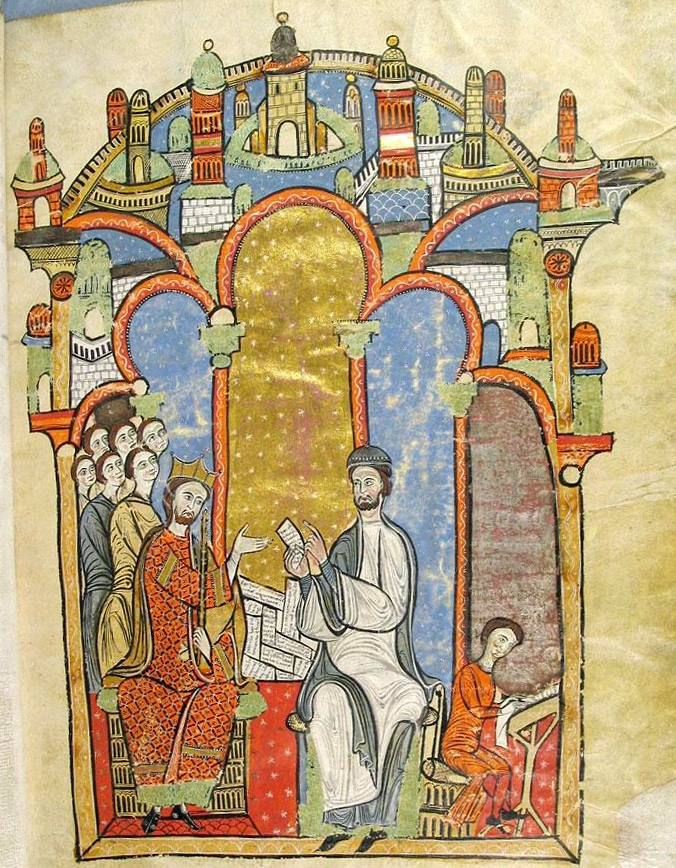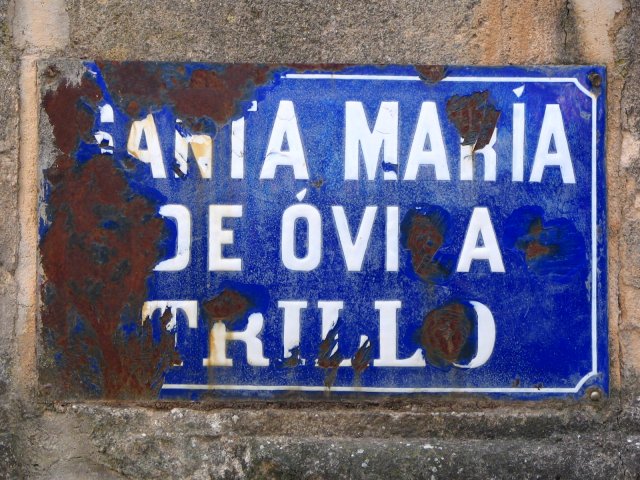|
Cartulary
A cartulary or chartulary (; Latin: ''cartularium'' or ''chartularium''), also called ''pancarta'' or ''codex diplomaticus'', is a medieval manuscript volume or roll (''rotulus'') containing transcriptions of original documents relating to the foundation, privileges, and legal rights of ecclesiastical establishments, municipal corporations, industrial associations, institutions of learning, or families. The term is sometimes also applied to collections of original documents bound in one volume or attached to one another so as to form a roll, as well as to custodians of such collections. Definitions Michael Clanchy defines a cartulary as "a collection of title deeds copied into a register for greater security". A cartulary may take the form of a book or a '' codex''. Documents, chronicles or other kinds of handwritten texts were compiled, transcribed or copied into the cartulary. In the introduction to the book ''Les Cartulaires'', it is argued that in the contemporary diplomati ... [...More Info...] [...Related Items...] OR: [Wikipedia] [Google] [Baidu] |
Hemming's Cartulary
''Hemming's Cartulary'' is a manuscript cartulary, or collection of charters and other land records, collected by a monk named Hemming around the time of the Norman Conquest of England. The manuscript comprises two separate cartularies that were made at different times and later bound together; it is in the British Library as MS Cotton Tiberius A xiii. The first was composed at the end of the 10th or beginning of the 11th century. The second section was compiled by Hemming and was written around the end of the 11th or the beginning of the 12th century. The first section, traditionally titled the ''Liber Wigorniensis'', is a collection of Anglo-Saxon charters and other land records, most of which are organized geographically. The second section, ''Hemming's Cartulary'' proper, combines charters and other land records with a narrative of deprivation of property owned by the church of Worcester. The two works are bound together in one surviving manuscript, the earliest survivin ... [...More Info...] [...Related Items...] OR: [Wikipedia] [Google] [Baidu] |
Liber Feudorum Maior
The ''Liber feudorum maior'' (or ''LFM'', medieval Latin for "great book of fiefs"), originally called the ''Liber domini regis'' ("book of the lord king"), is a late twelfth-century illuminated cartulary of the Crown of Aragon. It was compiled by the royal archivist Ramon de Caldes with the help of Guillem de Bassa for Alfonso II, beginning in 1192. It contained 902 documents dating as far back as the tenth century. It is profusely illustrated in a Romanesque style, a rarity for utilitarian documents. The LFM is an indispensable source for the institutional history of the emerging Principality of Catalonia. It is preserved as a file in the Arxiu de la Corona d'Aragó (ACA), Cancelleria reial, Registres no. 1, in Barcelona. Manuscript history Only 114 of the original 888 folios of the ''LFM'' remain, but only ninety-three of the original 902 documents have been completely lost, and thus a near-complete reconstruction of its contents remains possible. The prologue to the doc ... [...More Info...] [...Related Items...] OR: [Wikipedia] [Google] [Baidu] |
Hemming (monk)
Hemming (occasionally Heming) was a monk, author and compiler in medieval England from around the time of the Norman conquest of England. He was a senior brother at Worcester Cathedral Priory, and his significance derives from the monastic cartulary (and works therein) attributed to him. Hemming's name is Scandinavian, which may mean either he or his ancestors were Scandinavians settled in England. His birth and death dates are unknown, but he was actively writing soon after the Conquest. Hemming became a sub-prior in the Worcester cathedral priory.Mason "Hemming (fl. c.1095)" ''Oxford Dictionary of National Biography'' He is named in both the ''Liber Vitae'' of Worcester Cathedral as well as a list of members of the cathedral chapter that was compiled during the episcopate of Samson, the bishop from 1096 to 1112. Hemming was the eponymous author and compiler of a work usually called ''Hemming's Cartulary''. This is a collection of documents gathered together with a series of n ... [...More Info...] [...Related Items...] OR: [Wikipedia] [Google] [Baidu] |
Santa María De Óvila
Santa María de Óvila is a former Cistercian monastery built in Spain beginning in 1181 on the Tagus River near Trillo, Guadalajara, about northeast of Madrid. During prosperous times over the next four centuries, construction projects expanded and improved the small monastery. Its fortunes declined significantly in the 18th century, and in 1835 it was confiscated by the Spanish government and sold to private owners who used its buildings to shelter farm animals. American publisher William Randolph Hearst bought parts of the monastery in 1931 with the intention of using its stones in the construction of a grand and fanciful castle at Wyntoon, California, but after some 10,000 stones were removed and shipped, they were abandoned in San Francisco for decades. These stones are now in various locations around California: the old church portal was erected at the University of San Francisco, and the chapter house was reassembled by Trappist monks at the Abbey of New Clairvaux in ... [...More Info...] [...Related Items...] OR: [Wikipedia] [Google] [Baidu] |
British Library
The British Library is the national library of the United Kingdom and is one of the largest libraries in the world. It is estimated to contain between 170 and 200 million items from many countries. As a legal deposit library, the British Library receives copies of all books produced in the United Kingdom and Ireland, including a significant proportion of overseas titles distributed in the UK. The Library is a non-departmental public body sponsored by the Department for Digital, Culture, Media and Sport. The British Library is a major research library, with items in many languages and in many formats, both print and digital: books, manuscripts, journals, newspapers, magazines, sound and music recordings, videos, play-scripts, patents, databases, maps, stamps, prints, drawings. The Library's collections include around 14 million books, along with substantial holdings of manuscripts and items dating as far back as 2000 BC. The library maintains a programme for content acquis ... [...More Info...] [...Related Items...] OR: [Wikipedia] [Google] [Baidu] |
Pancartes
''Pancartes'' were medieval historical documents, drawn up by a monastery, that recorded a sequence of gifts to the monastery. They were created in order that the whole group of grants or gifts could be confirmed by the ruler.Van Houts "Historical Writing" ''Companion to the Anglo-Norman World'' p. 117 They are known from Normandy and other northern French regions. Sometimes they were created over a number of years as successive gifts were added to the original document. Generally the various grants were tied together with a narrative, usually quite short, that linked the various gifts to a short history of the religious house.Chibnall "Charter and Chronicle" ''Church and Government'' p. 11 These documents were a frequent product of monastic houses in Normandy during the early 11th century and afterwards. Normally, they were not a product of the lay administration's chanceries, but came from ecclesiastical sources. The historian David Bates has argued that the term ''pancartes'' ha ... [...More Info...] [...Related Items...] OR: [Wikipedia] [Google] [Baidu] |
Historical Criticism
Historical criticism, also known as the historical-critical method or higher criticism, is a branch of criticism that investigates the origins of ancient texts in order to understand "the world behind the text". While often discussed in terms of Jewish and Christian writings from ancient times, historical criticism has also been applied to other religious and secular writings from various parts of the world and periods of history. The primary goal of historical criticism is to discover the text's primitive or original meaning in its original historical context and its literal sense or ''sensus literalis historicus''. The secondary goal seeks to establish a reconstruction of the historical situation of the author and recipients of the text. That may be accomplished by reconstructing the true nature of the events that the text describes. An ancient text may also serve as a document, record or source for reconstructing the ancient past, which may also serve as a chief interest to the ... [...More Info...] [...Related Items...] OR: [Wikipedia] [Google] [Baidu] |
Croatia
, image_flag = Flag of Croatia.svg , image_coat = Coat of arms of Croatia.svg , anthem = "Lijepa naša domovino"("Our Beautiful Homeland") , image_map = , map_caption = , capital = Zagreb , coordinates = , largest_city = capital , official_languages = Croatian , languages_type = Writing system , languages = Latin , ethnic_groups = , ethnic_groups_year = 2021 , religion = , religion_year = 2021 , demonym = , government_type = Unitary parliamentary republic , leader_title1 = President , leader_name1 = Zoran Milanović , leader_title2 = Prime Minister , leader_name2 = Andrej Plenković , leader_title3 = Speaker of Parliament , leader_name3 = Gordan Jandroković , legislature = Sabor , sovereignty_type ... [...More Info...] [...Related Items...] OR: [Wikipedia] [Google] [Baidu] |
Split, Croatia
)'' , settlement_type = City , anthem = ''Marjane, Marjane'' , image_skyline = , imagesize = 267px , image_caption = Top: Nighttime view of Split from Mosor; 2nd row: Cathedral of Saint Domnius; City center of Split; 3rd row: View of the city from Marjan Hill; Night in Poljička Street; Bottom: ''Riva'' waterfront , image_flag = Flag of the City of Split.svg , flag_size = 150px , flag_link = Flag of Split , image_seal = , seal_size = , image_shield = Coat of arms of Split.svg , shield_size = 90px , shield_link = Coat of arms of Split , image_map = , mapsize = , map_caption = Map of the Split city area. , image_map1 = , mapsize1 = , map_caption1 = , image_dot_map = , dot_mapsize ... [...More Info...] [...Related Items...] OR: [Wikipedia] [Google] [Baidu] |
Windsheim
Bad Windsheim (East Franconian: ''Winsa'') is a small historic town in Bavaria, Germany with a population of almost 12,000. It lies in the district Neustadt an der Aisch-Bad Windsheim, west of Nuremberg. In the Holy Roman Empire, Windsheim held the rank of Imperial City (until 1802). Since 1810 Windsheim is part of Bavaria. In 1961, it became a spa town and has since been called "Bad Windsheim". Climate The climate in this area shows only small differences between highs and lows, and there is adequate rainfall year-round. The Köppen Climate Classification subtype for this climate is " Cfb" (Marine West Coast Climate/ Oceanic climate). History A document from 741 proves for the first time the existence of the town, then called ''Uuinidesheim''. The name changed to "Windsheim" by linguistic development, meaning "the home of the wind". In the late stage of World War II, a Volkssturm battalion took control of the town and refused to surrender to the approaching American troops, de ... [...More Info...] [...Related Items...] OR: [Wikipedia] [Google] [Baidu] |
England
England is a country that is part of the United Kingdom. It shares land borders with Wales to its west and Scotland to its north. The Irish Sea lies northwest and the Celtic Sea to the southwest. It is separated from continental Europe by the North Sea to the east and the English Channel to the south. The country covers five-eighths of the island of Great Britain, which lies in the North Atlantic, and includes over 100 smaller islands, such as the Isles of Scilly and the Isle of Wight. The area now called England was first inhabited by modern humans during the Upper Paleolithic period, but takes its name from the Angles, a Germanic tribe deriving its name from the Anglia peninsula, who settled during the 5th and 6th centuries. England became a unified state in the 10th century and has had a significant cultural and legal impact on the wider world since the Age of Discovery, which began during the 15th century. The English language, the Anglican Church, and Engli ... [...More Info...] [...Related Items...] OR: [Wikipedia] [Google] [Baidu] |



.jpg)
